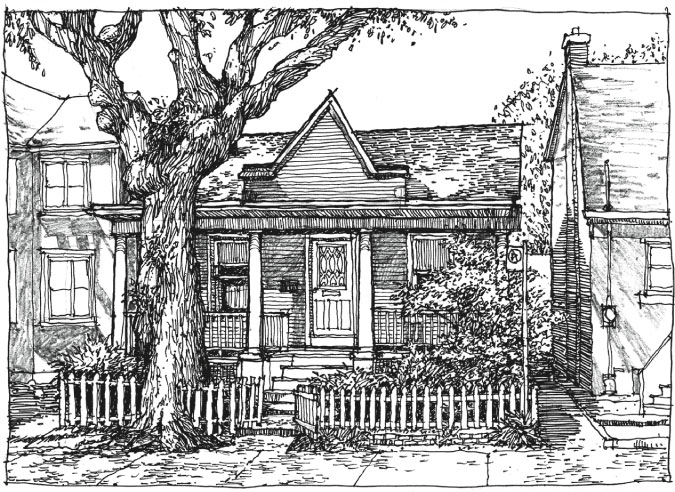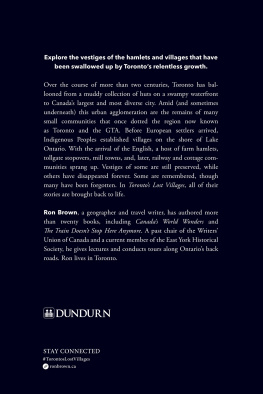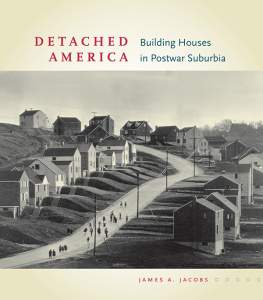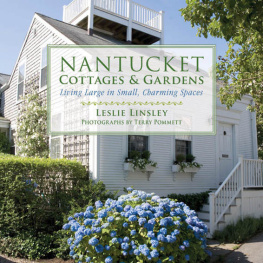Contents
Guide
MODEST HOPES
Don Loucks & Leslie Valpy
MODEST HOPES
Homes and Stories of Torontos Workers from the 1820s to the 1920s

Copyright Don Loucks and Leslie Valpy, 2021
All rights reserved. No part of this publication may be reproduced, stored in a retrieval system, or transmitted in any form or by any means, electronic, mechanical, photocopying, recording, or otherwise (except for brief passages for purpose of review) without the prior permission of Dundurn Press. Permission to photocopy should be requested from Access Copyright.
Publisher: Scott Fraser | Acquiring editor: Kathryn Lane | Editor: Michael Carroll
Cover designer: Sophie Paas-Lang | Interior designer: Laura Boyle
Cover image: Don Loucks
All Toronto home illustrations Don Loucks
Printer: Marquis
Library and Archives Canada Cataloguing in Publication
Title: Modest hopes : homes and stories of Torontos workers from the 1820s to the 1920s / Don Loucks & Leslie Valpy.
Names: Loucks, Don, author. | Valpy, Leslie, author.
Description: Includes bibliographical references and index.
Identifiers: Canadiana (print) 20210194502 | Canadiana (ebook) 20210194979 | ISBN 9781459745544 (softcover) | ISBN 9781459745551 (PDF) | ISBN 9781459745568 (EPUB)
Subjects: LCSH: Working classDwellingsOntarioTorontoHistory. | LCSH: Row houses OntarioToronto History. | LCSH: Semi-detached housesOntarioTorontoHistory. | LCSH: Historic buildings OntarioToronto. | LCSH: Working classOntarioToronto History. | LCSH: Toronto (Ont.) Buildings, structures, etc. | LCSH: Toronto (Ont.)History.
Classification: LCC FC3097.7 L68 2021 | DDC 971.3/541dc23

We acknowledge the support of the Canada Council for the Arts and the Ontario Arts Council for our publishing program. We also acknowledge the financial support of the Government of Ontario, through the Ontario Book Publishing Tax Credit and Ontario Creates, and the Government of Canada.
Care has been taken to trace the ownership of copyright material used in this book. The authors and the publisher welcome any information enabling them to rectify any references or credits in subsequent editions.
The publisher is not responsible for websites or their content unless they are owned by the publisher.
Dundurn Press
1382 Queen Street East
Toronto, Ontario, Canada M4L 1C9
dundurn.com, @dundurnpress 
To Lynda, Naomi, Alanna, and Emma
Don Loucks
To Aaron, Robbie, and Matthew
Leslie Valpy
CONTENTS
AUTHORS NOTE
T he all-too-often voiceless and forgotten people who built Toronto are silent, their lives and achievements routinely ignored and erased. Modest Hopes was written with the idea that after introducing the cottages that were their homes, the importance of their lives and contributions to the city will be better understood.
These small, 400- to 900-square-foot, one- to three-bedroom houses were often built on the less desirable and inexpensive land close to the industries where the people who lived in them worked. For every Rosedale mansion, there were hundreds of these workers cottages. Their small size, lowly status, and poor location, crowded onto streets downtown and in the west and east ends, have made these houses vulnerable to neglect and demolition, too often replaced by larger modern homes and commercial development. Their disappearance is like the erasing of our history, like the tearing out of pages from the Toronto storybook.
In the 19th century, Toronto was a young city that greeted many thousands of new arrivals, most with very few possessions. Their dreams of a new home must have been as powerful and all-consuming as were their hopes for a better future for themselves and their families. The cottages that still remain embody and remind us of these hopes and dreams they are modest in size but grand in hope.
We hope that with the pen-and-ink drawings, photographs of the modest houses, and the telling of the stories of the successful trajectory of the lives of some of the immigrants and workers who flourished in them, the value of these homes will become evident. Their worth should be measured less by their size and architectural antecedents and more by how these vessels were able to shelter, support, and enable so many families to flourish.
Each of these cottages has a story.
After reading Modest Hopes, we hope readers will think differently about these workers cottages. When walking or driving by one, a pair, or a long or short row of these little houses, the reader might wonder who lived in them, where did they come from, what did they accomplish, what part of our city did they build, and how did they contribute to the Toronto we know today? In Modest Hopes, these stories are told.

Fig. i Hamilton Street.
INTRODUCTION
Home Is Where the Heart Is
There is little thought for the past, especially the past of the working poor, those who lived in tiny homes and laboured in the traditional industries and trades. Memory or acknowledgement of those who truly built the country with their hands and their skill and fortitude is obliterated. We just romanticize them as an idea and pave over their existence.
John Doyle, Globe and Mail
T he purpose of Modest Hopes is coincidentally summarized in the preface of George H. Rust-DEyes Cabbagetown Remembered, where he writes that his book is intended to remedy, in some small way, the imbalance of attention to the lower social orders and their environment, caused by the perspective of the early writers on the history of this city.
In the early 1800s, the Town of York was defined by John Graves Simcoes 1793 Plan of York Harbour, which consisted of a 10-square-block grid just west of the Don River. The geography of the lake, river, and rising ground to the north contained the small community of one- and two-storey log, frame, and later brick buildings. Muddy York, named after the condition of its streets, had a population of 700 in 1812, made up mostly of English, Scottish, and Irish settlers; Loyalists who had fled the American Revolution; and a small number of escaped slaves from the U.S. South. By 1852, the Town of York had a new name, Toronto, had been designated a city, and had a population of 30,000.
Visitors to the city in the early part of the century often remarked on the clouds of wood and later coal smoke that obscured the community and its few church steeples. They were also assailed by the noise of industry and the yelling of carters and merchants in the streets, as well as the unavoidable smell of horse dung and backyard privies.
These were some of the conditions that greeted the thousands of newcomers who began to flood into Toronto at this time. As primitive and unsavoury as this environment was, it did not dim the hopes of those who arrived looking for a better life. With almost inconceivable sacrifice and commitment, tens of thousands of immigrants came to Toronto in search of a brighter future. Their sense of dislocation, their fear of the unknown, and the utter strangeness of this community in the wilderness must have been almost overwhelming. The fact that most of the newcomers spoke English, the language of their new home, would have helped them adjust to their new surroundings. Connections with family and friends already living in Toronto with whom they could live until they found their own homes would have made the transition from the old to the new easier. But for most of the newcomers, adjusting to life in their adoptive city must have been a struggle only comparable to the experience of immigrants today.













